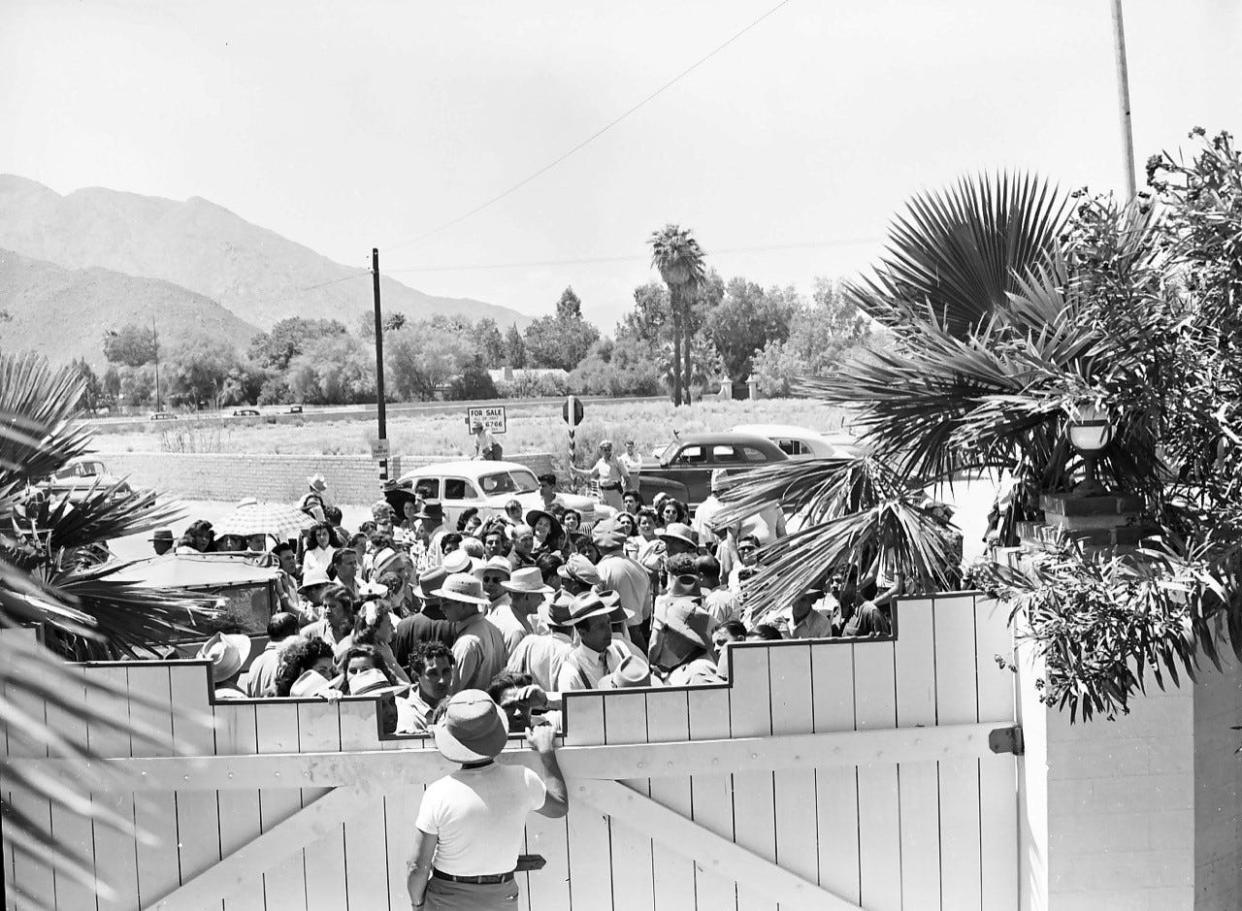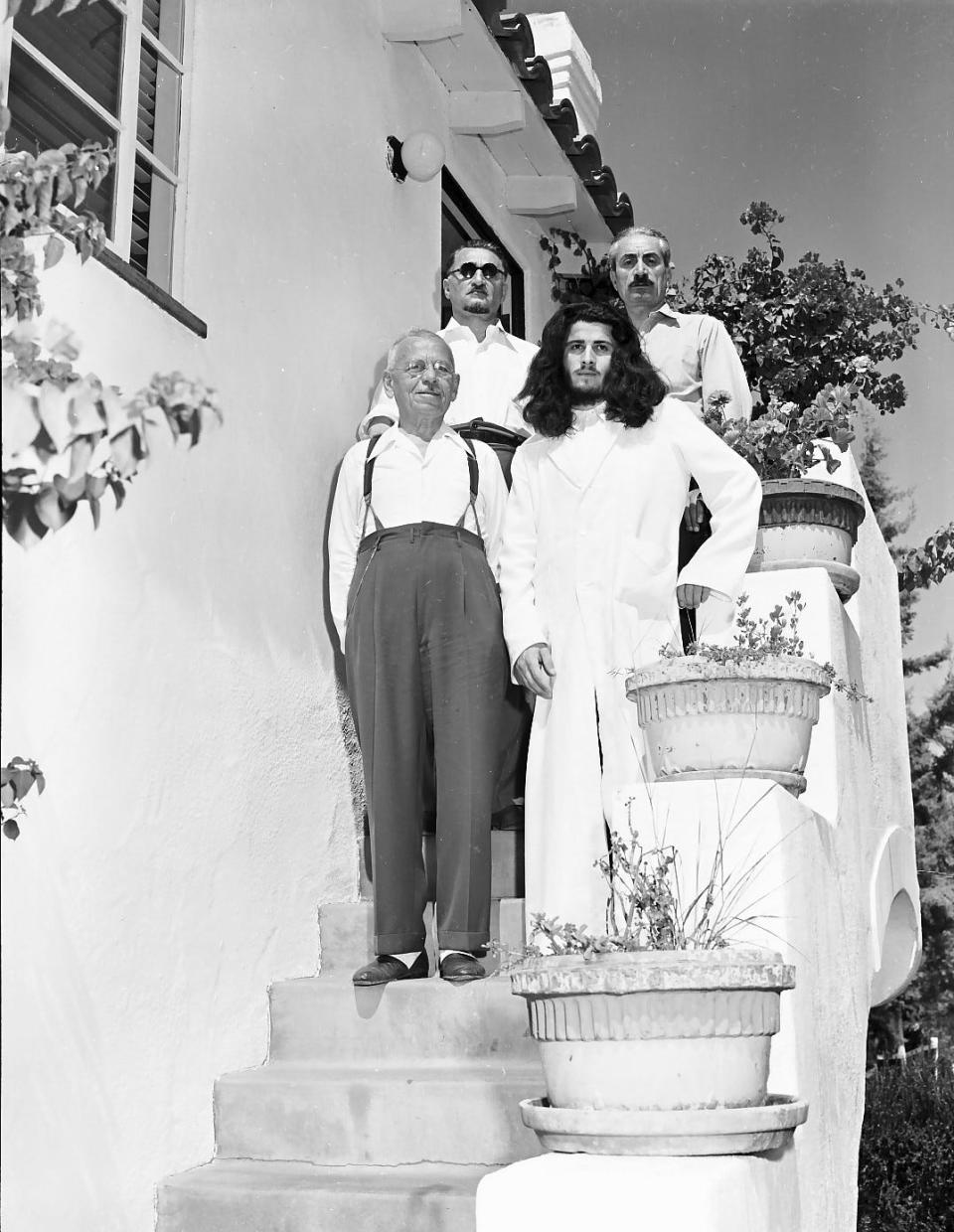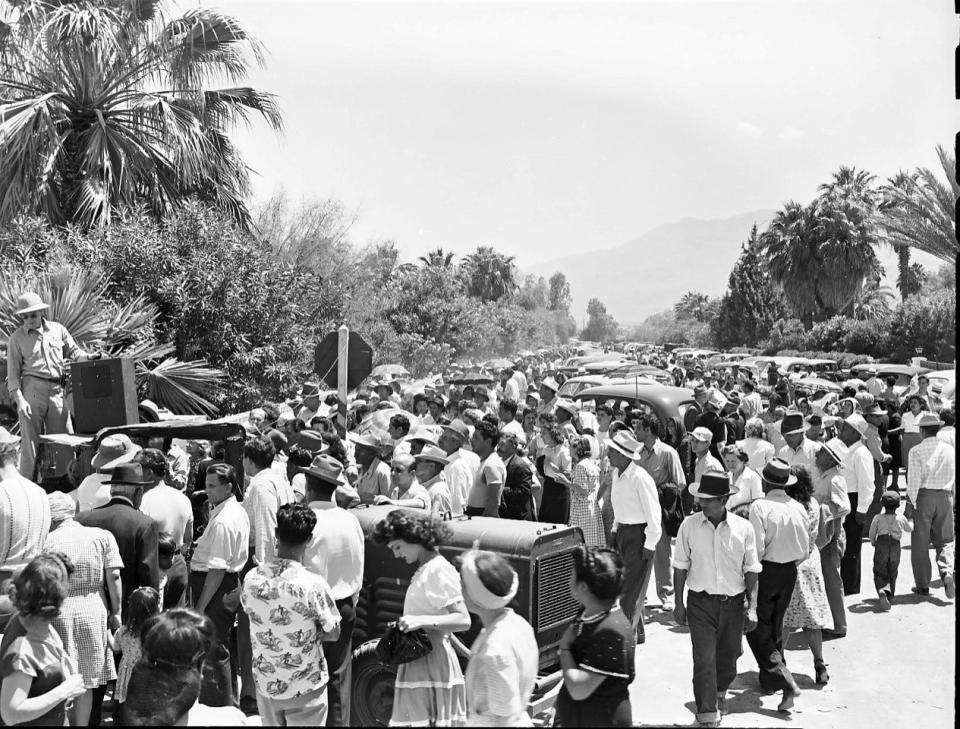History: Faith healer caused national stir, attracting deluge of people seeking mystic cure

First in a trickle and then in a flood, they came from everywhere to see Avak Hagopian. The arrival in the desert in May 1947 of the young, bearded, Armenian mystic, faith-healer caused a national stir and an unprecedented torrent of visitors to the desert. The newspaper reported, “They are coming into this village on foot, by bus, train, rattle trap automobiles and trucks and in brand new shining automobiles ….”
“And the drift of those with chronic ailments, ranging from professed attacks of just plain and unexplained ‘spells’ to stretcher cases with suffering paralytic victims, can be seen on the streets of Palm Springs. They come from all walks of life like the miner ‘with coal dust in his lungs,’ to the lawyer with a thirty year pain in his right ear; the clerk who said: ‘I have back trouble,’ and the jewel-bedecked matron who stepped from her chauffeur-driven limousine and had to stand in line like the others to await her turn before Avak, The Great, who has declared that he cares naught for money and the ‘poor unto him are not unlike the rich.’”
But he’d come from the other side of the world at the request of one of the very, very rich.
Krikor Arakelian, a native of Turkish Armenia, arrived in the San Joaquin Valley of California in 1895 as a penniless 12-year-old boy and had grown exceedingly wealthy.
Arakelian began his farming operations before World War I and owned three wineries at the time prohibition went into effect. When prohibition was repealed in 1933 he controlled 1,000,000 gallons of the 12,000,000 available in the country. He built his winery’s capacity up to 10,500,000 gallons by 1945.
Arakelian amassed a fortune estimated at $25,000,000. He owned vast acreage of grape vineyards and melon fields in the most fertile farmland in the world. He maintained a 1,500-acre ranch in Madera County and a home in San Francisco, and quite naturally, a home in Palm Springs. He was widely known for his philanthropic and patriotic enterprises, purchasing more than $2,000,000 in war bonds during World War II.
Arakelian’s son Vaughn had been in an accident at age 9 and suffered epilepsy secondary to the head trauma. Finding no relief for his child despite prodigious searching and spending, Arakelian was desperate.
Avak Hagopian had been in Tehran working as a goldsmith when he was struck by a vision from the divine indicating that he could heal with his hands. News of his miraculous powers spread throughout the Middle East and tore through the Armenian community in Southern California.
Arakelian paid for Hagopian's flight from Cairo to the United States. The Associated Press covered each step of the long journey to the American desert. Hagopian’s arrival in Los Angeles was even covered by Pathe in a newsreel.
The Los Angeles Times reported his arrival in Palm Springs, “Avak appeared at the door of the airliner. The faintest trace of a smile flickered across his delicate, olive-tinted face as he stopped and surveyed the mob. He wore a black, hooded cape gathered at the neck by a hand-beaten silver chain and circular buckles. Beneath the cape he wore a brown cassock of coarse weave. Black trouser cuffs extending below the cassock fell on green suede shoes. He wore no jewelry. Beneath Avak’s hood, one could see a hairnet holding his shoulder-length black hair, faintly streaked with silver. His most striking features were his silky, curly beard and his darting eyes that fairly danced with excitement as he talked.” Some likened his appearance to that of Christ.

With the publicity, throngs of the sick and the afflicted deluged the city, puddling around the Arakelian estate, (previously owned by heiress Barbara Hutton,) on the corner of Via Miraleste and Tamarisk Road. “There was one blind woman, a young epileptic, a hunchback man whose speech faltered and others whose hands trembled with palsy,” reported the Los Angeles Times.
The sleepy village struggled under the influx to provide accommodations for all the visitors. Despite the torrent, Hagopian limited himself to “healing” 60 persons per day, five days per week. As more and more people inundated the city, peddlers and patients flooded the streets.
Palm Springs was swamped. The St. Louis Post Dispatch Sun noted, “Cocktail bars and eating-houses could not keep up with the custom. Little carts appeared in the streets. Peddlers sold hot dogs, hamburgers, Eskimo pies and even water by the glass. People sweltered and some fainted. Police had to forbid the pitching of tents. Street pollution became a problem. The police chief had to call in his reserves, bring back his men from vacations."
Arakelian expressed dismay about the crowds, pleading with the press to tell people to stay away from Palm Springs until he could see whether “Avak has real healing ability.” He despaired “we ourselves do not know anything about him except what we read in reports from Iran.” But patients continued to stream into town as Hagopian’s fame swelled.
Hot weather arrived in June and Hagopian announced he was exhausted and went north to the Armenian community in Fresno. He had laid hands on some 8,000 people prior to escaping the heat.

By September, he staged three events at the gigantic Shrine Auditorium in Los Angeles and appeared at the Armenian Apostolic Holy Cross Church on 20th Street in “a spectacle that stunned church officials.”
“The raven-haired healer strode rapidly toward the entrance as the crowd pressed in around him. Children cried as parents reached to rescue them from falling underfoot. Uniformed policemen held back the overflow at the door when every available space inside had been filled … those inside the walls of the church pressed en masse toward the guest. Women wept. A grandmother held the picture of her daughter … with a tearful and unheard petition. Intent middle-aged men and women disregarded comfort and courtesy in a frantic effort to reach the dais. Believers stood on the church benches to watch him pass, many of them wailing hysterically and pleading for his blessings.”
Rumors began that Hagopian would establish a “faith healing institute” in Los Angeles, sponsored by several prominent businessmen including Tatos Kardashian, the great-grandfather of the reality TV stars, who pledged to build a temple. Several Armenian families were involved.
According to biographer Jerry Oppenheimer, Kardashian’s brother-in-law “Issak Shakarian, had made a fortune in the dairy business in Downey, California. His son, Demos … believed in miracles and healings, and in the early sixties would found a global organization for Pentecostal Christian businessmen called the Full Gospel Businessmen's Fellowship International."
They planned a special train tour through 34 states and three Canadian provinces and with an entourage of more than one hundred followers, Hagopian traveled across the nation. But when his visa expired, and the Immigration and Naturalization Service refused to extend it. The temple in Los Angeles was never built.
Vaughn returned to his Madera home, uncured. His millionaire vintner father, unable to help his afflicted son, died in 1951. After the cross-country trip, interest in Hagopian waned. He was arrested in Florida for over-staying his visa and after all the splash of publicity, reports say he died in anonymity in Poughkeepsie, New York.
Tracy Conrad is president of the Palm Springs Historical Society. The Thanks for the Memories column appears Sundays in The Desert Sun. Write to her at pshstracy@gmail.com.
This article originally appeared on Palm Springs Desert Sun: Palm Springs history: Faith healer caused a national stir in the 1940s

